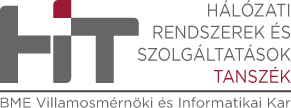Cross-Domain Transfer Learning for Road Extraction from Satellite to UAV
High-resolution UAV imagery offers great potential for detailed road extraction in complex environments, but annotated UAV datasets remain scarce and costly to acquire. In contrast, satellite imagery is abundant and globally available, though its resolution is limited. Recent foundation models such as AnySat demonstrate the effectiveness of large-scale multimodal embeddings for Earth observation tasks, yet they do not address the cross-domain gap between satellite and UAV data, nor the challenges of few-shot and zero-shot road detection.
This work investigates cross-domain transfer learning, leveraging satellite-based embeddings as a source of knowledge and adapting them to UAV imagery through lightweight adapters, feature alignment, and embedding-based inference. The goal is to achieve robust UAV road extraction with minimal or no UAV-specific annotations.
Tasks to be performed by the student will include:
· Review related works on transfer learning, few-shot/zero-shot methods, and domain adaptation in remote sensing.
· Study embedding alignment methods (contrastive learning, adversarial domain adaptation, statistical distribution matching).
· Create a transfer pipeline from satellite embeddings to UAV imagery with lightweight adapter networks.
· Design few-shot and zero-shot learning strategies for road extraction, including prototype-based inference.
· Verify performance through experiments on UAV datasets (e.g., UAVid, VisDrone, ISPRS), with evaluation metrics such as mIoU, F1-score, and APLS.
· Conduct ablation studies on alignment strategies, adapter designs, and embedding update schemes.
Note:Applicant will use publicly available datasets and receive technical support from SZTAKI.
Supervisor at the department: Dr. Chang Liu, Assistant Professor
External supervisor: Prof. Tamás Szirányi, HUN-REN SZTAKI.

